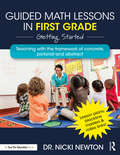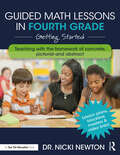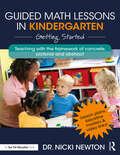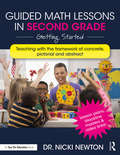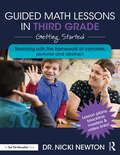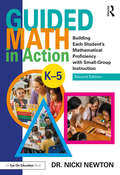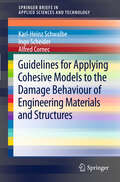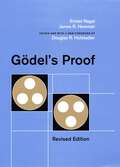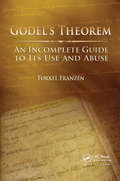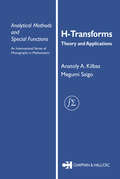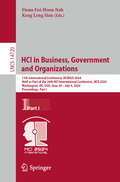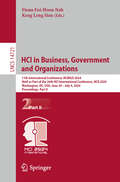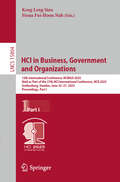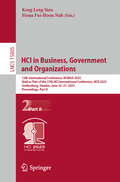- Table View
- List View
Guided Math Lessons in First Grade: Getting Started
by Nicki NewtonGuided Math Lessons in First Grade provides detailed lessons to help you bring guided math groups to life. Based on the bestselling Guided Math in Action, this practical book offers 16 lessons, taught in a round of 3—concrete, pictorial, and abstract. The lessons are based on the priority standards and cover fluency, word problems, operations and algebraic thinking, and place value. Author Dr. Nicki Newton shows you the content as well as the practices and processes that should be worked on in the lessons, so that students not only learn the content but also how to solve problems, reason, communicate their thinking, model, use tools, use precise language, and see structure and patterns. Throughout the book, you’ll find tools, templates, and blackline masters so that you can instantly adapt the lesson to your specific needs and use it right away. With the easy-to-follow plans in this book, students can work more effectively in small guided math groups—and have loads of fun along the way!
Guided Math Lessons in Fourth Grade: Getting Started
by Nicki NewtonGuided Math Lessons in Fourth Grade provides detailed lessons to help you bring guided math groups to life. Based on the bestselling Guided Math in Action, this practical book offers 16 lessons, taught in a round of three–concrete, pictorial and abstract. The lessons are based on the priority standards and cover fluency, word problems, fractions and place value. Author Dr. Nicki Newton shows you the content as well as the practices and processes that should be worked on in the lessons, so that students not only learn the content but also how to solve problems, reason, communicate their thinking, model, use tools, use precise language, and see structure and patterns. Throughout the book, you’ll find tools, templates and blackline masters so that you can instantly adapt the lesson to your specific needs and use it right away. With the easy-to-follow plans in this book, students can more work effectively in small guided math groups—and have loads of fun along the way! Remember that guided math groups are about doing the math. So doing mathematical sketches to show what they understand and can make sense of the abstract numbers. When students are given the opportunities to make sense of the math in hands-on and visual ways, then the math begins to make sense!
Guided Math Lessons in Kindergarten: Getting Started
by Nicki NewtonGuided Math Lessons in Kindergarten provides detailed lessons to help you bring guided math groups to life. Based on the bestselling Guided Math in Action, this practical book offers 16 lessons, taught in a round of three—concrete, pictorial and abstract. The lessons are based on the priority standards and cover fluency, word problems, counting and cardinality, and place value. Author Dr. Nicki Newton shows you the content as well as the practices and processes that should be worked on in the lessons, so that students not only learn the content but also how to solve problems, reason, communicate their thinking, model, use tools, use precise language, and see structure and patterns. Throughout the book, you’ll find tools, templates and blackline masters so that you can instantly adapt the lesson to your specific needs and use it right away. With the easy-to-follow plans in this book, students can more work effectively in small guided math groups—and have loads of fun along the way! Remember that guided math groups are about doing the math. So throughout these lessons you will see students working with manipulatives to make meaning, doing mathematical sketches to show what they understand and can make sense of the abstract numbers. When students are given the opportunities to make sense of the math in hands-on and visual ways, then the math begins to make sense to them!
Guided Math Lessons in Second Grade: Getting Started
by Nicki NewtonGuided Math Lessons in Second Grade provides detailed lessons to help you bring guided math groups to life. Based on the bestselling Guided Math in Action, this practical book offers 16 lessons, taught in a round of 3—concrete, pictorial, and abstract. The lessons are based on the priority standards and cover fluency, word problems, operations and algebraic thinking, and place value. Author Dr. Nicki Newton shows you the content as well as the practices and processes that should be worked on in the lessons, so that students not only learn the content but also how to solve problems, reason, communicate their thinking, model, use tools, use precise language, and see structure and patterns. Throughout the book, you’ll find tools, templates, and blackline masters so that you can instantly adapt the lesson to your specific needs and use it right away. With the easy-to-follow plans in this book, students can work more effectively in small guided math groups—and have loads of fun along the way!
Guided Math Lessons in Third Grade: Getting Started
by Nicki NewtonGuided Math Lessons in Third Grade provides detailed lessons to help you bring guided math groups to life. Based on the bestselling Guided Math in Action, this practical book offers 16 lessons, taught in a round of 3—concrete, pictorial and abstract. The lessons are based on the priority standards and cover fluency, word problems, fractions and place value. Author Dr. Nicki Newton shows you the content as well as the practices and processes that should be worked on in the lessons, so that students not only learn the content but also how to solve problems, reason, communicate their thinking, model, use tools, use precise language, and see structure and patterns. Throughout the book, you’ll find tools, templates and blackline masters so that you can instantly adapt the lesson to your specific needs and use it right away. With the easy-to-follow plans in this book, students can work more effectively in small guided math groups—and have loads of fun along the way! Remember that guided math groups are about doing the math. So throughout these lessons you will see students working with manipulatives to make meaning, doing mathematical sketches to show what they understand and can make sense of the abstract numbers. When students are given the opportunities to make sense of the math in hands-on and visual ways, then the math begins to make sense to them!
Guided Math in Action: Building Each Student's Mathematical Proficiency with Small-Group Instruction
by Nicki NewtonLearn how to help elementary students build mathematical proficiency with purposeful, standards-based, differentiated, engaging small-group instruction. This best-selling book from Dr. Nicki Newton provides a repertoire of in-depth strategies for conducting effective guided math lessons, scaffolding and managing learning in small groups, and assessing learning. Dr. Newton shows you the framework for guided math lessons and then helps you develop an action plan to get started. This fully updated second edition features helpful new sections on beliefs, teacher moves, planning, talking and questioning, and kidwatching. It also contains a brand new study guide to help you get the most out of the book and use it with your colleagues. Perfect for teachers, coaches, and supervisors, this popular resource is filled with tools you can use immediately, including anchor charts, schedules, templates, and graphic organizers. With the practical help throughout, you’ll be able to implement Tier 1 and 2 lessons easily. This book will help you guide all your students to becoming more competent, flexible, and confident mathematicians!
Guidelines for Applying Cohesive Models to the Damage Behaviour of Engineering Materials and Structures
by Karl-Heinz Schwalbe Ingo Scheider Alfred CornecThis brief provides guidance for the application of cohesive models to determine damage and fracture in materials and structural components. This can be done for configurations with or without a pre-existing crack. Although the brief addresses structural behaviour, the methods described herein may also be applied to any deformation induced material damage and failure, e.g. those occurring during manufacturing processes. The methods described are applicable to the behaviour of ductile metallic materials and structural components made thereof. Hints are also given for applying the cohesive model to other materials.
Gut gepackt – Kein Bit zu viel: Kompression digitaler Daten verständlich erklärt (essentials)
by Olaf ManzBei der heutigen Datenflut, die auf Speichermedien und im Internet kursiert, ist die Kompression digitaler Daten nach wie vor ein immens wichtiger Aspekt bei Datenübertragung und -speicherung. Dieses essential erläutert ohne theoretischen Überbau und mit elementaren mathematischen und informatischen Methoden die wichtigsten Kompressionsverfahren, so unter anderem die Entropiecodierungen von Shannon-Fano und von Huffman, sowie die Wörterbuchcodierungen der Lempel-Ziv-Familie. Ausführlich eingegangen wird auch auf Irrelevanzreduktion und die Quantisierung bei optischen und akustischen Signalen, die die Unzulänglichkeiten des menschlichen Auges und Ohres zur Datenkompression ausnutzen. Illustriert wird das Ganze anhand gängiger Praxisanwendungen aus dem alltäglichen Umfeld. Die Aufbereitung erlaubt den Einsatz beispielsweise in Arbeitsgruppen an MINT-Schulen, bei Einführungskursen an Hochschulen und ist auch für interessierte Laien geeignet.
Guts of Surfaces and the Colored Jones Polynomial
by David Futer Efstratia Kalfagianni Jessica PurcellThis monograph derives direct and concrete relations between colored Jones polynomials and the topology of incompressible spanning surfaces in knot and link complements. Under mild diagrammatic hypotheses, we prove that the growth of the degree of the colored Jones polynomials is a boundary slope of an essential surface in the knot complement. We show that certain coefficients of the polynomial measure how far this surface is from being a fiber for the knot; in particular, the surface is a fiber if and only if a particular coefficient vanishes. We also relate hyperbolic volume to colored Jones polynomials. Our method is to generalize the checkerboard decompositions of alternating knots. Under mild diagrammatic hypotheses, we show that these surfaces are essential, and obtain an ideal polyhedral decomposition of their complement. We use normal surface theory to relate the pieces of the JSJ decomposition of the complement to the combinatorics of certain surface spines (state graphs). Since state graphs have previously appeared in the study of Jones polynomials, our method bridges the gap between quantum and geometric knot invariants.
Gödel's Proof
by Douglas R. Hofstadter Ernest Nagel James R NewmanAn accessible explanation of Kurt Gödel&’s groundbreaking work in mathematical logic: &“An excellent nontechnical account.&” —Bulletin of the American Mathematical Society In 1931 Kurt Gödel published his fundamental paper, &“On Formally Undecidable Propositions of Principia Mathematica and Related Systems.&” This revolutionary paper challenged certain basic assumptions underlying much research in mathematics and logic. Gödel received public recognition of his work in 1951 when he received the first Albert Einstein Award for achievement in the natural sciences—perhaps the highest award of its kind in the United States. The award committee described his work in mathematical logic as &“one of the greatest contributions to the sciences in recent times.&” However, few mathematicians of the time were equipped to understand the young scholar&’s complex proof. Ernest Nagel and James Newman provide a readable and accessible explanation to both scholars and non-specialists of the main ideas and broad implications of Gödel's discovery. It offers every educated person with a taste for logic and philosophy the chance to understand a previously difficult and inaccessible subject. New York University Press is proud to publish this special edition of one of its bestselling books. With a new foreword by Douglas R. Hofstadter, Pulitzer Prize-winning author of Gödel, Escher, Bach, who also updated the text, this book will be of interest to students, scholars, and professionals in the fields of mathematics, computer science, logic and philosophy, and science.
Gödel's Theorem: An Incomplete Guide to Its Use and Abuse
by Torkel Franzén"Among the many expositions of Gödel's incompleteness theorems written for non-specialists, this book stands apart. With exceptional clarity, Franzén gives careful, non-technical explanations both of what those theorems say and, more importantly, what they do not. No other book aims, as his does, to address in detail the misunderstandings and abuses of the incompleteness theorems that are so rife in popular discussions of their significance. As an antidote to the many spurious appeals to incompleteness in theological, anti-mechanist and post-modernist debates, it is a valuable addition to the literature." --- John W. Dawson, author of Logical Dilemmas: The Life and Work of Kurt Gödel
H-Transforms: Theory and Applications
by Anatoly A. KilbasAlong with more than 2100 integral equations and their solutions, this handbook outlines exact analytical methods for solving linear and nonlinear integral equations and provides an evaluation of approximate methods. Each section provides examples that show how methods can be applied to specific equations.
HCI in Business, Government and Organizations: 11th International Conference, HCIBGO 2024, Held as Part of the 26th HCI International Conference, HCII 2024, Washington, DC, USA, June 29 – July 4, 2024, Proceedings, Part I (Lecture Notes in Computer Science #14720)
by Fiona Fui-Hoon Nah Keng Leng SiauThis two-volume set of HCIBGO 2024 constitutes the refereed proceedings of the 11h International Conference on HCI in Business, Government and Organizations, held as part of the 26th International Conference, HCI International 2024, which took place in from June 29 - July 4, 2024 in Washington DC, USA. Two volumes of the HCII 2024 proceedings are dedicated to this year’s edition of the HCIBGO conference. The first covers topics related to Digital Commerce and Marketing, Artificial Intelligence in Business, and Workplace, Well-being and Productivity. The second focuses on topics related to Teleworking and Virtual Collaboration, and Improving User Experience and Service Efficiency.
HCI in Business, Government and Organizations: 11th International Conference, HCIBGO 2024, Held as Part of the 26th HCI International Conference, HCII 2024, Washington, DC, USA, June 29 – July 4, 2024, Proceedings, Part II (Lecture Notes in Computer Science #14721)
by Fiona Fui-Hoon Nah Keng Leng SiauThis two-volume set of HCIBGO 2024 constitutes the refereed proceedings of the 11h International Conference on HCI in Business, Government and Organizations, held as part of the 26th International Conference, HCI International 2024, which took place in from June 29 - July 4, 2024 in Washington DC, USA. Two volumes of the HCII 2024 proceedings are dedicated to this year’s edition of the HCIBGO conference. The first covers topics related to Digital Commerce and Marketing, Artificial Intelligence in Business, and Workplace, Well-being and Productivity. The second focuses on topics related to Teleworking and Virtual Collaboration, and Improving User Experience and Service Efficiency.
HCI in Business, Government and Organizations: 12th International Conference, HCIBGO 2025, Held as Part of the 27th HCI International Conference, HCII 2025, Gothenburg, Sweden, June 22–27, 2025, Proceedings, Part I (Lecture Notes in Computer Science #15804)
by Fiona Fui-Hoon Nah Keng Leng SiauThis two-volume set of HCIBGO 2025 constitutes the refereed proceedings of the 12th International Conference on HCI in Business, Government and Organizations, held as part of the 27th International Conference, HCI International 2025, which took place in Gothenburg, Sweden, during June 22–27, 2025. Two volumes of the HCII 2025 proceedings are dedicated to this year&’s edition of the HCIBGO conference. The first volume covers topics related to User Experience, Design, and Digital Engagement; Artificial Intelligence in Digital Transformation and Business Processes; and Social Media and Market Insights. The second volume focuses on topics related to Roles, Skills, and Technology Adoption in Modern Workplaces; and Collaboration, Communication, and Work Dynamics.
HCI in Business, Government and Organizations: 12th International Conference, HCIBGO 2025, Held as Part of the 27th HCI International Conference, HCII 2025, Gothenburg, Sweden, June 22–27, 2025, Proceedings, Part II (Lecture Notes in Computer Science #15805)
by Fiona Fui-Hoon Nah Keng Leng SiauThis two-volume set of HCIBGO 2025 constitutes the refereed proceedings of the 12th International Conference on HCI in Business, Government and Organizations, held as part of the 27th International Conference, HCI International 2025, which took place in Gothenburg, Sweden, during June 22–27, 2025. Two volumes of the HCII 2025 proceedings are dedicated to this year&’s edition of the HCIBGO conference. The first volume covers topics related to User Experience, Design, and Digital Engagement; Artificial Intelligence in Digital Transformation and Business Processes; and Social Media and Market Insights. The second volume focuses on topics related to Roles, Skills, and Technology Adoption in Modern Workplaces; and Collaboration, Communication, and Work Dynamics.
HIV/AIDS in South Africa 25 Years On
by Leslie Swartz Seth C. Kalichman Poul Rohleder E. Cameron Leickness Chisamu SimbayiMuch has happened since the first appearance of AIDS in 1981: it has been identified, studied, and occasionally denied. The virus has shifted host populations and spread globally. Medicine, the social sciences, and world governments have joined forces to combat and prevent the disease. And South Africa has emerged as ground zero for the pandemic. The editors of HIV/AIDS in South Africa 25 Years On present the South African crisis as a template for addressing the myriad issues surrounding the epidemic worldwide, as the book brings together a widely scattered body of literature, analyzes psychosocial and sexual aspects contributing to HIV transmission and prevention, and delves into complex intersections of race, gender, class, and politics. Including largely overlooked populations and issues (e.g., prisoners, persons with disabilities, stigma), as well as challenges shaping future research and policy, the contributors approach their topics with rare depth, meticulous research, carefully drawn conclusions, and profound compassion. Among the topics covered: The relationship between HIV and poverty, starting from the question, "Which is the determinant and which is the consequence?"Epidemiology of HIV among women and men: concepts of femininity and masculinity, and gender inequities as they affect HIV risk; gender-specific prevention and intervention strategies. The impact of AIDS on infants and young children: risk and protective factors; care of children by HIV-positive mothers; HIV-infected children.Current prevention and treatment projects, including local-level responses, community-based work, and VCT (voluntary counseling and testing) programs.New directions: promoting circumcision, vaccine trials, "positive prevention."South Africa's history of AIDS denialism.The urgent lessons in this book apply both globally and locally, making HIV/AIDS in South Africa 25 Years On uniquely instructive and useful for professionals working in HIV/AIDS and global public health.
HMH GoMath!: Student Edition (StA) Volume 1 Grade 4 2016
by Houghton Mifflin Harcourt*This textbook has been transcribed in UEB, formatted according to Braille textbook formats, proofread and corrected. <P><P>
HMH GoMath!: Student Edition (StA) Volume 2 Grade 4 2016
by Houghton Mifflin Harcourt*This textbook has been transcribed in UEB, formatted according to Braille textbook formats, proofread and corrected. <P><P>
HMH Math (Grade 4): Standards, Actions, Processes
by Houghton Mifflin Harcourt Publishing CompanyNIMAC-sourced textbook
HMH Math [Grade 1]: Standards, Actions, Processes
by Houghton Mifflin HarcourtNIMAC-sourced textbook
HMH Math [Grade 3]: Standards, Actions, Processes
by Houghton Mifflin HarcourtNIMAC-sourced textbook
HMH: Modules 10 - 20
by Timothy Dixon Juli K. KanoldWelcome to Into Math, Grade 5! In this program, you will develop skills and make sense of mathematics by solving real-world problems, using hands-on tools and strategies, and collaborating with your classmates. With the support of your teacher and by engaging with meaningful practice, you will learn to persevere when solving problems. Into Math will not only help you deepen your understanding of mathematics, but also build your confidence as a learner of mathematics. Even more exciting, you will write all your ideas and solutions right in your book. In your Into Math book, writing and drawing on the pages will help you think deeply about what you are learning, help you truly understand math, and most important, you will become a confident user of mathematics!
HMH: into Math Student workbook Grade 5, Modules 1 - 9
by Timothy D. Kanold Edward B. Burger Juli K. Dixon Steven J. Leinwand Matthew R. Larson Jennifer LemppWelcome to Into Math, Grade 5! In this program, you will develop skills and make sense of mathematics by solving real-world problems, using hands-on tools and strategies, and collaborating with your classmates. With the support of your teacher and by engaging in meaningful practice, you will learn to persevere when solving problems. Into Math will not only help you deepen your understanding of mathematics but also build your confidence as a learner of mathematics. Even more exciting, you will write all your ideas and solutions in your book. In your Into Math book, writing and drawing on the pages will help you think deeply about what you are learning, help you truly understand math, and most importantly, you will become a confident user of mathematics!
